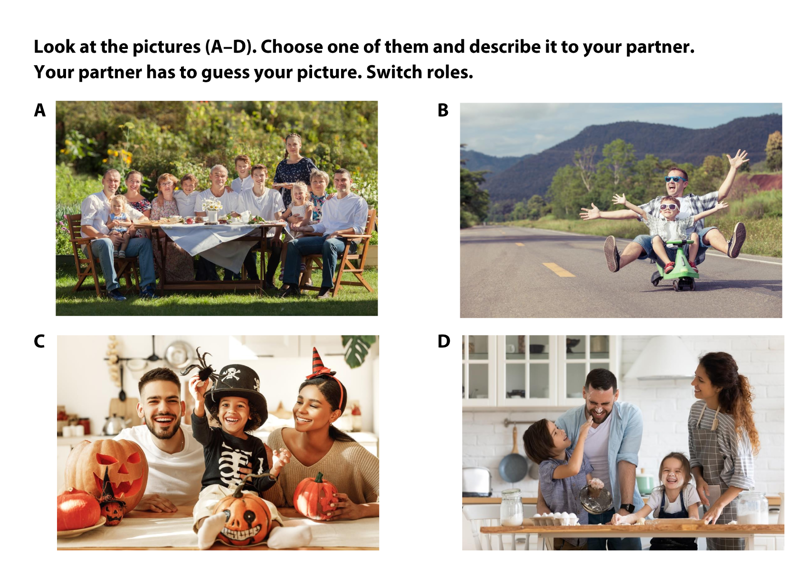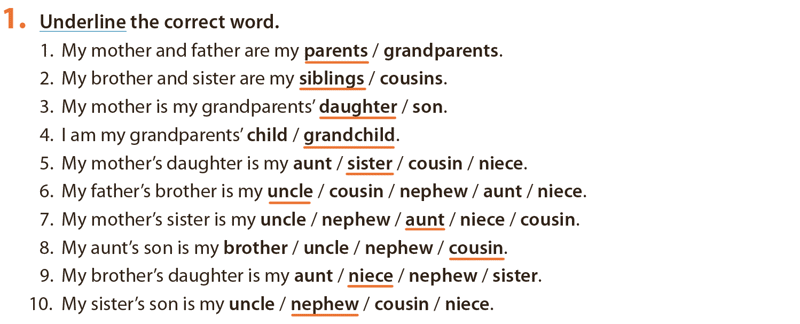Lesson Stages
- Ice-breaker/Lead-in, 6 min
- Highlighting vocabulary, 5 min
- Controlled practice, 20 min
- Freer practice, 11 min
- Feedback, 3 min
Preparation
- printed ice-breaker name tags (if you are teaching a new group)
Prior Knowledge and Skills
The student is able to
- name the most common family-related words (mother, father, etc.)
- name the most common free-time activities (listening to music, skiing, etc.)
- describe a picture using relevant vocabulary and tenses
Lesson Outcomes
The student is able to
- use family-related words in speech and writing
- listen for detailed information to match speakers to their profiles
- introduce their family in English
- describe one of their relatives in English
Lesson Materials
- (Student’s Book, Scene 1 Texts) pp. 6–7
- (Workbook, Scene 1 Exercises Part 1) pp. 6–7
- 1.1 Family and Relatives
Keywords and Techniques
- family and relatives
- hobbies
- picture description
- multiple-choice questions
- jumbled words
- substitution and transformation drills
- multiple matching
- general and special questions
Cross-Curricular Topics
- Values and morals




